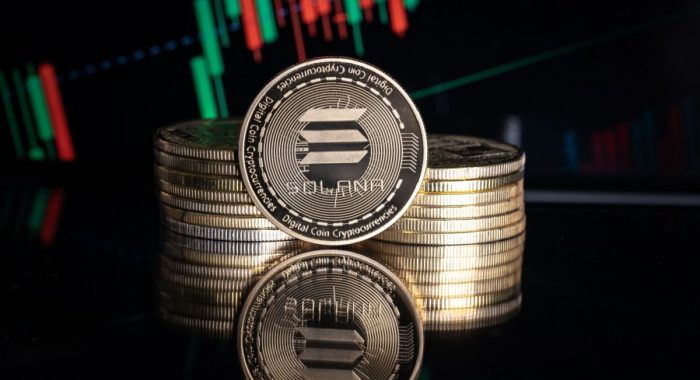From VC coins to the meme craze, everyone is already "aesthetically fatigued."The People are Tired (of losing)
For retail investors, meme coins seem to be the closest thing to having an equal opportunity in the market—until they are not.
The People are Tired (of losing)
Author: francescoweb3, Head of Castle Labs
Compiled by: zhouzhou, BlockBeats
Editor's Note: This article deeply explores the changes in the crypto market, particularly the fatigue felt by retail users. It is not difficult to see the shift from a venture capital-led market to a meme coin craze starting in early 2024. While meme coins once provided a fairer opportunity for retail, they ultimately became overly speculative, leading to a deterioration in market conditions. Retail users are tired of losses, and the market has become fast-paced and competitive, emphasizing the importance of finding a new balance and calling for more attention to projects with real applications and fair distribution mechanisms.
The following is the original content (reorganized for readability):
As Kaitoai emphasized, in the last two weeks of January 2025, the mention of the word "tired" increased on crypto Twitter.

This cycle is different from others, more challenging, and even surprises traders who have experienced two or three cycles. The market is changing: the speed of narrative shifts is faster, and attention has become the scarcest currency. Last but not least, increasing regulatory scrutiny and political intervention in the crypto space have introduced new variables.
Why do people feel tired?
Retail investors have missed opportunities for too long; every time it seems the goal is within reach, the market dynamics change faster than before. In the 2021 cycle, we saw venture capitalists achieve exponential returns compared to retail investors who had no access to private investment opportunities.
This continued until around 2023, when projects like TIA and DYM emerged, marking the end of retail investors' disillusionment with these venture capital extraction techniques.
What might be the most rational consequence of this? A movement seeking to change the power dynamics.
The long-known narrative of "meme coins" gained increasing attention as venture capitalists no longer had private chips to sell to ignorant buyers in the market. This was beneficial for retail investors, who managed to find a fair competitive environment. Until the narrative became overly exaggerated and saturated, further shortening users' attention spans. Let’s look at how the market landscape has evolved and where we might be heading, attempting to explain why people feel tired.
Phase One (Early 2024) - From VC Coins to Meme Coins
It almost feels like a long time ago, before the AI craze and meme coin frenzy, there was a period when the mainstream play for retail investors was airdrops. This play was initiated by Arbitrum and other Layer 2 airdrops. Retail users saw the potential of airdrops by trying new protocols and chains, turning airdrops into a business, with companies offering airdrop-as-a-service.
However, dreams turned into nightmares when these coins began to release and disclose their tokenomics, leaving users very disappointed: all the efforts resulted in almost nothing airdropped? One of the most controversial releases was Scroll, a ZK-EVM L2.

After over a year of ecosystem promotion, Scroll's airdrop was disappointing, raising questions about why 5.5% of the SCR supply was allocated to Binance instead of the community.

Moreover, the circulating supply of most of these tokens was very low (circulating supply / total supply), with a large portion allocated to VCs. Another topic of discussion is TIA and DYM, which at one point had narratives on crypto Twitter revolving around staking them in exchange for expectations of future ecosystem project airdrops.
You guessed it: those airdrops never happened, and the price trends of the tokens only went down (below is the chart for DYM).

Here’s an overview of the different rounds and investor unlocks for TIA:

In the first unlock, over 97.5% of TIA's circulating supply was unlocked, valued at over $1.88, with daily unlock amounts reaching $10 million.

Ultimately, retail investors grew tired of these types of tokens, meaning that the issuance price of most tokens only fell and eventually even dropped below their last financing valuation.
This is evident when we look at the dashboard provided below:

This dashboard considers the investment returns of each VC's best-performing investments in the data sample.
Returns from venture capital in the previous cycle:

Returns from venture capital in this cycle:

The end of the venture capital era is so evident that even Hayes accurately pointed this out in his December 2024 article, where retail investors saw a glimmer of hope at the end of the dark tunnel: meme coins.
Tired of the venture capital-led schemes, retail investors finally had the chance to enter the permissionless market that blockchain was supposed to open up for them.
This must be the direction of the future, right?
Phase Two - The Meme Coin Craze

After the end of the venture capital era, users had to find new plays, and they discovered this through muststopmurad and his "meme coin super cycle."
For retail investors, meme coins seemed to be the closest thing to having equal opportunities in the market—until they no longer were.
Prices soared, Trump was elected, and we were going to the moon.
But suddenly, the liquidity plug was pulled, market attention shifted elsewhere, and all your meme coins crashed during the market correction.
Meanwhile, all the insiders who had early opportunities to position themselves also had the chance to sell their chips. Perhaps the situation retail investors ultimately faced was even worse than what they experienced with VC coins.
What is left now? A greater inclination towards risk, further shortening attention spans, liquidity being further dispersed, while trying to understand past mistakes through more gambling disguised as "trading."
Pumpfun is just a symptom of the direction the market is heading.

jediBlocmates highlighted the net negative issues in this ecosystem.

Among the mentioned reasons, the Pump.Fun team continuously transferred large amounts of fees out. Just last month, they transferred over 880,877 SOL to Kraken, totaling $211,410,480.

The impact of meme coins and the Pump.Fun craze is evident in the market changes they brought: rapid narrative shifts, an environment that feels player-to-player, and people no longer trusting anything.
Phase Three - Market Trauma PTSD: People Feel Tired
After being let down by venture capitalists, users now carry the trauma of the Pump.Fun arena, hoping their next 100x return can make up for previous losses. The market has now changed forever, and the new plays reflect this change.
Market rotations are shorter and faster; in previous cycles, you could hold positions overnight and hold tokens for weeks, but now you can hold them for at most a few days or hours. New projects siphon off all liquidity: attention is scarce, and everyone is playing the same game.
The influence of politics and regulation is increasing: this is particularly evident in the launch of TRUMP, highlighting how external events can have unprecedented impacts on the market.
Unfortunately, once again, retail investors have lost their way in this game, with many tokens becoming like the capital extraction mechanisms they are already very familiar with. In contrast to this trend, the launch of Hyperliquidx has drawn attention to community-led airdrops and distributions. Over 31% of the airdrop was allocated to the community, and the token price has increased more than 7 times since its release, proving that fair distribution can be achieved.

Nevertheless, it must be noted that not every project can replicate this model, as teams like Hyperliquid have incurred tens of millions in expenses over a long period.
Importantly, the launch of Hyperliquid has brought a paradigm shift within the industry. Coupled with Kaito's release, the approach to project launch strategies has also changed.

Where Does This Leave Us?
These stages highlight two extremes:
The power held by venture capitalists is too great: retail investors cannot participate in private rounds and can only act as exit liquidity.
Unrestricted meme coin acquisition has led to a player-to-player market, worsening overall market conditions.
Both have the same consequence: dissatisfaction among retail investors and a demand for balance and stability.
We leave some possible thoughts to consider what the future might look like: a return to practicality, reducing focus on meme coins, and paying more attention to practical projects.

Reducing the focus on value extraction, paying more attention to value creation, and avoiding zero-sum games. A return to fair distribution, inspired by Hyperliquid.
A complete transformation in protocol marketing and token release methods, utilizing tools like Kaito for marketing and growth activities, and valuing the influence of social graphs and communities.
While we all know that price is the best marketing tool and has always been a key factor in attracting smart talent and liquidity, it would be a pity to remain focused on value extraction as a supportive regulatory environment is on the horizon.
The growth cycles of emerging markets are often filled with roller-coaster-like ups and downs, but it is crucial to have an ultimate goal and outline a feasible path for the majority. That is, to build something truly valuable.

Disclaimer: The content of this article solely reflects the author's opinion and does not represent the platform in any capacity. This article is not intended to serve as a reference for making investment decisions.
You may also like
Cosmos Becomes Epicenter of Real-World Assets as Ondo Finance Announces New L1
State Duma deputy assured that miners' data is protected by the tax authorities

Blockchain Soneium Launches First Music NFTs

VanEck Analysts: Solana Price Could Reach $2025 by End of 520

